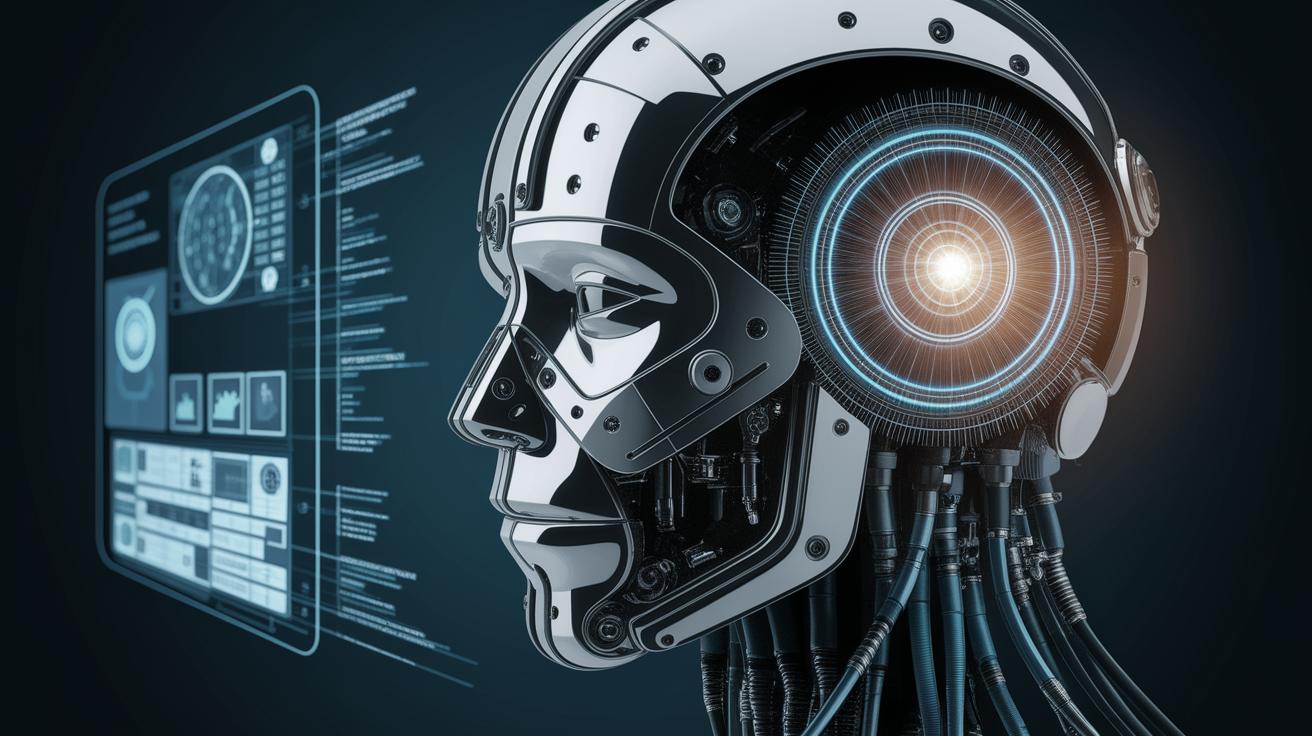In the modern age of digitization, industries are constantly seeking innovative solutions to enhance their productivity and efficiency. One sphere where remarkable progress has been made is in maintenance strategy—specifically, predictive maintenance—facilitated by Artificial Intelligence (AI). This blog explores how AI assists in predictive maintenance, exploring its applications in improving overall equipment effectiveness, boosting total productive and planned preventive maintenance, and other advantages influencing industry practices. We’ll also delve into how AI bridges the gap between data and actionable insights, ensuring organizations remain ahead of technical issues, ultimately increasing their return on investment (ROI). Let’s unravel the transformative impact AI holds for maintenance strategies.
Using AI in Predictive Maintenance: The Benefits of AI-Assisted Maintenance
Artificial Intelligence has revolutionized various industries, and its role in predictive maintenance is a game-changer. The integration of AI in maintenance practices offers significant advantages over traditional methods, transforming how organizations handle equipment diagnostics and repairs.
AI-assisted maintenance uses advanced algorithms and real-time data to predict equipment failures before they occur. This proactive approach results in reduced downtime, increased operational efficiency, and lowers maintenance costs. Businesses can optimize their resources by addressing potential issues before they escalate, ensuring smoother operations and extended equipment lifespan.
What is AI–Assisted Maintenance? Discover How AI is Used in Predictive Maintenance
AI-assisted maintenance refers to the use of AI technologies, such as machine learning and data analytics, in predicting potential failures in equipment and infrastructure. This predictive maintenance strategy combines data from sensors, historical records, and operational patterns to foresee malfunctions before they happen.
By employing AI technologies, organizations can transition from reactive to predictive maintenance models. AI analyzes patterns and trends that humans might miss, providing insights that lead to timely interventions. This capability translates into reduced unscheduled downtimes and enhances the reliability and availability of critical assets.
How AI is Used in Maintenance
AI applications in maintenance are diverse and extend across various aspects of equipment and infrastructure management. One common usage is the development of predictive models that anticipate equipment failures, allowing maintenance teams to schedule timely repairs and replacements.
Moreover, AI-powered tools enhance decision-making by processing vast datasets to determine optimal maintenance schedules and workflows. The use of AI in maintenance effectively transforms data into actionable insights, facilitating higher precision in maintenance operations and significantly improving equipment efficiency.
How AI-Assisted Maintenance Impacts the Industry
The impact of AI-assisted maintenance on industries is profound, fostering a culture of efficiency and resource optimization. Organizations adopting AI technologies in maintenance report significant improvements in their maintenance routines, contributing to cost savings and increased productivity.
Additionally, AI facilitates better risk management by identifying potential points of failure before they cause disruption. This proactive stance enables industries to maintain consistent output levels, reinforcing reliability and customer satisfaction.
Improve “Overall Equipment Effectiveness” (OEE)
Overall Equipment Effectiveness (OEE) is a critical performance metric in industries dealing with complex machinery. AI’s role in elevating OEE metrics is noteworthy, as it leverages real-time data to highlight areas for improvement and optimize machine performance.
By detecting anomalies early, AI allows precise interventions that reduce equipment’s time spent on repairs. This seamless operation helps maximize equipment availability and performance, translating into substantial improvements in OEE scores across sectors.
Boosting “Total Productive Maintenance” (TPM)
Total Productive Maintenance (TPM) aims to maximize equipment effectiveness by integrating maintenance into daily operations. AI plays a key role by autonomously monitoring equipment conditions and providing insights to streamline maintenance processes.
AI-driven TPM strategies ensure that equipment is consistently operating at peak efficiency, minimizing downtime and extending equipment life. The integration of AI in TPM activities exemplifies how technology aids in achieving leaner operational models.
Total “Planned Preventive Maintenance” (PPM)
AI enhances Planned Preventive Maintenance (PPM) by transitioning scheduled interventions from fixed intervals to data-informed schedules. This shift allows for maintenance tasks based on real-time equipment conditions and predicted needs rather than standardized timelines.
This strategic enhancement minimizes redundant maintenance activities while focusing on equipment that truly needs attention, promoting optimal resource allocation and reducing unnecessary expenses.
Other Benefits of Integrating AI in Predictive Maintenance Strategies
Beyond improving maintenance schedules, AI offers a plethora of additional benefits. It facilitates informed capital investments by offering insights into equipment life cycles and replacement needs, enabling businesses to plan budgets effectively.
AI’s predictive capabilities ensure that organizations can maintain competitive advantages by reducing operational risks and enhancing service delivery, aligning maintenance strategies with broader business objectives.
AI-Assisted Maintenance: Bridging the Gap Between Data and Action
AI serves as a crucial link between massive datasets and tangible actions. It interprets complex datasets and translates them into understandable formats, empowering maintenance teams to make data-driven decisions that enhance equipment performance.
By continually learning from operational patterns, AI systems refine their algorithms, ensuring more accurate predictions and less ambiguity in maintenance decision-making processes. This dynamic capability bolsters organizational resilience and adaptability in the face of evolving industrial challenges.
AI-Assisted Maintenance: Staying Ahead of Issues, Increasing ROI
The integration of AI in maintenance enables businesses to preemptively address potential failures, significantly reducing repair times and costs. This foresight enhances equipment reliability and uptime, contributing to improved ROI.
Additionally, AI facilitates comprehensive monitoring and reporting, allowing organizations to track maintenance interventions and investments. These insights enable better alignment of maintenance strategies with financial goals, optimizing overall returns.
Related Articles
To further explore the transformative power of AI in predictive maintenance, consider delving into related topics such as the ethics of AI in industrial applications, the development of smart factories, or the expanding role of IoT in modern maintenance strategies. Understanding these broader concepts can offer comprehensive insights into the evolving landscape of industrial technology.
| Aspect | Discussion Points |
|---|---|
| AI Benefits | Reduced downtime, cost savings, resource optimization |
| OEE Improvement | Enhancing machine availability and performance |
| TPM & PPM Impact | Streamlining processes, minimizing downtime, informed maintenance scheduling |
| Data-Driven Actions | Bridging data analytics with maintenance decisions |
| Financial Impact | Improved ROI, alignment with financial goals |


